 Image search results - "Museum" Image search results - "Museum" |

Yasukuni Shrine is Japan's most prominent shrine for the war dead. Near Kudanshita Station on the Tozai Subway Line. This is the first giant torii
|
|

Path to shrine
|
|
|

Statue of Omura Masujiro (1824-1869) 大村益次郎, founder of Japan's modern army. Also pushed for the establishment of Yasukuni Shrine.
|
|
|
|

Second torii
|
|

You wash your mouth hands here. Built in 1940 by Japanese living in the US. 大手水舎
|
|

Gate built in 1934. 神門
|
|
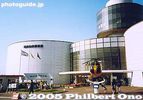
Museum of Aeronautical SciencesThe museum is right at the end of the runway of Narita International Airport.
|
|

Back view of second torii
|
|
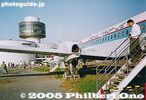
Old YS-11 prop plane.
|
|

Imperial crest on gate door
|
|

Former Hatano residence and birth home of Yoshida Togo 旧旗野邸 (吉田東伍生家)
|
|
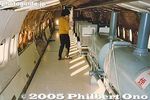
Inside the YS-11
|
|
|

Rear view of birth home of Yoshida Togo who was a famous geographer of Japan who compiled an encylopedia of Japanese place names. His son was Yoshida Chiaki who composed the melody of the song "Biwako Shuko no Uta" (Lake Biwa Rowing Song).
|
|
|
|

A room in the birth home of Yoshida Togo
|
|
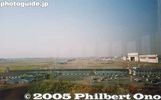
Museum's observation deck.
|
|
|

Garden of the birth home of Yoshida Togo
|
|

Noh stage and the cherry tree used as the barometer for Tokyo's cherry blossom blooming condition.
|
|

Entrance to the Yoshida Togo Memorial Museum which exhibits various documents and personal effects of Yoshida Togo. Museum admission 300 yen. Closed Mon.
|
|

Yasukuni Shrine, Torii and Haiden hall
|
|

Inside Yoshida Togo Memorial Museum. The 2nd floor also has a display panel about his son Yoshida Chiaki who composed the song "Hitsuji-gusa" whose melody was used in the song "Biwako Shuko no Uta" (Lake Biwa Rowing Song).
|
|

Yasukuni Shrine, Haiden hall. After the Class-A war criminals (such as Hideki Tojo) were enshrined here, the late Emperor Hirohito (Showa) never worshipped here again. 拝殿
|
|
|
|
|
|

Noh stage
|
|

Koku-Koen Station on the Seibu Shinjuku Line 航空公園駅
|
|

Road to the Fukagawa-Edo Museum, near Kiyosumi-Shirakawa Station.
|
|
|
|

In front of Koku-Koen Station. Notice the paper plane sculpture and YS-11 prop plane.
|
|

Fukagawa-Edo Museum
|
|

Yushukan war museum 遊就館
|
|

Paper plane sculpture
|
|

After you enter the exhibition area, first you see drawings of famous people from Fukagawa.
|
|

Entrance to Yushukan war museum 遊就館
|
|

Another sculpture in the Aviation Memorial Park.
|
|

Then you see a dramatic bird's eye view of the recreated neighborhood of Sagacho, Fukagawa. The entire neighborhood is indoors.
|
|

Yushukan war museum 遊就館
|
|

Air Nippon YS-11 propeller plane. Donated by All Nippon Airways in 1997.
|
|

The lighting inside the museum also changes to reflect the time of day. This is night time.
|
|

Inside Yushukan war museum. Impressive, but its version of Japanese war history is skewed. No exhibit on the Pearl Harbor attack either. 遊就館
|
|

YS-11 propeller plane. Open to the public on certain days of the year.
|
|

Day time
|
|

Fukushima Prefectural Museum
|
|

Inside Yushukan war museum: Photos of the war deceased. Look carefully and you may find photos of Hideki Tojo and co.
|
|

Front of YS-11 propeller plane.
|
|

Rice storehouse
|
|

Yushukan war museum 遊就館
|
|

Propeller
|
|

Cat on the roof. Meow is what you first hear in the museum. Its name is "Mamesuke." Actually a robot cat whose head can move up and down.
|
|

Nagasaki Atomic Bomb Museum. Next to the hypocenter is the atomic bomb museum and registry shelf which stores the names of the atomic bomb victims.
|
|
|

Part of the original runway at the Tokorozawa Aviation Memorial Park. 所沢航空記念公園
|
|

Main street with shops.
|
|

Registry Shelf storing the names of atomic bomb victims
|
|

Memorial for military dogs which died.
|
|

Tokorozawa Aviation Memorial Park. 所沢航空記念公園
|
|

Vegetable seller. 八百屋の八百新
|
|

The Registry Shelf points to the hypocenter.
|
|

Memorial for military horses which died.
|
|

Tokorozawa Aviation Museum. The building on the left is an IMAX theater, and the larger structure on the right is modeled after a blimp on the inside to show retired planes and helicopters. Looks like jet turbine too. 所沢航空発祥記念館
|
|

Back room of the vegetable seller.
|
|

Nagasaki Atomic Bomb Museum entrance
|
|

Yushukan war museum 遊就館
|
|

In front of Tokorozawa Aviation Museum is a Curtiss-Wright C-46 transport plane.
|
|
|

Mother Statue 母の像
|
|

The C-46 was used by the Japan Air Self-Defense Forces for cargo transport from the 1950s.
|
|

Rice vendor. A small, wooden square box was used to measure the volume of rice to sell to a customer. 舂米屋職人
|
|

Memorial for sunken naval warships
|
|

Monument for Japan's Birth of Aviation 日本の航空発祥の地・所沢
|
|

Bales of rice inside the rice storehouse.
|
|

Actual film studio mockup of Kuruma-ya dumpling shop
|
|

Memorial for Justice Radhabinod Pal, an Indian judge during the war crimes tribunal. He was a judge who voted for the innocence of Japan's war criminals.
|
|

Monument for Japan's Birth of Aviation 日本の航空発祥の地・所沢
|
|

Machikido town gate made of wood. This gate marked the boundary between towns. It could also be closed. 町木戸
|
|

葛飾 柴又 くるまや
|
|
|

Back of Monument for Japan's Birth of Aviation日本の航空発祥の地・所沢
|
|

River boat taxi
|
|

Inside the studio set of Tora-san. Reconstructed with the original studio set materials used at the Ofuna movie studio.
|
|

Monument for kamikaze pilots who died.
|
|
|

River boat taxi
|
|

Kuruma-ya dumpling shop
|
|

Memorial for military horses and dogs which died.
|
|

Inside the Tokorozawa Aviation Museum. You are greeted by a replica of Kai-1, Japan's first military plane developed, produced, and flown at Tokorozawa on April 5, 1911. It flew 10 meters high and 800 meters long for 80 sec. 会式一号機
|
|

Fire watchtower on the left, and boat operator's house on the right. 船宿升田屋と相模屋
|
|

Family living room
|
|
|

Other more modern planes and helicopters are on display in the main exhibition hall. This is a North American T6G.
|
|

Boat operator's house 船宿升田屋と相模屋
|
|

Family living room
|
|

参集殿
|
|

Sikorsky H-19
|
|

Cross section of a typical Nagaya longhouse apartment.
|
|

Inside the shop
|
|

Rest house
|
|

Japan Air Self-Defense Force helicopter.
|
|

Nagaya longhouse
|
|
|
|

Garden 神池庭園
|
|

Inside helicopter
|
|

Cross section of a typical Nagaya longhouse apartment. It was a single room whose size was about 6 tatami mats.
|
|
|
|

Garden 神池庭園
|
|

Helicopter cockpit with glass bottom.
|
|

Cross section of a typical Nagaya longhouse apartment. The saw on the wall indicates that the resident was a log cutter. The area was close to Kiba where they processed logs.
|
|

Kitchen where they made the dumplings.
|
|

Entrance to sumo arena.
|
|
|

Clothes line for laundry.
|
|
|
|

Entrance to sumo arena
|
|

Above is a Piper L-21, below is Fuji T-1B.
|
|

Communal toilet
|
|

Miniature shop arcade
|
|

Sumo arena. An exhibition sumo tournament is held every April.
|
|
|

In front of the fire watchtower is this open area designed as a fire break to prevent any fires from spreading further. It is also a gathering place with food stalls.
|
|
|
|

慰霊の泉
|
|
|
|

Tora-san's documents
|
|

Food stands
|
|

Remains of a Nieuport 81E2.
|
|

Video theater
|
|

Tora-san's passport
|
|

Adding to the dignity of the shrine is a monkey show.
|
|

Replica of Nieuport 81E2. This was first imported to Japan in 1918 and used to train Japanese pilots by a French mission.
|
|

Exhibition room
|
|

Tora-san's personal effects
|
|

Model of Japan's first motorized flight.
|
|

Contents of his famous travel bag
|
|

Turbine engines
|
|

Ritto History Museum, accessible by bus from Kusatsu Station. 栗東歴史民俗博物館 MAP
|
|

Tora-san haniwa
|
|

Flight simulator (Not as good as Microsoft Flight Simulator.)
|
|

Ritto History Museum, stone buddha replica. 栗東歴史民俗博物館
|
|

More exhibits
|
|

Control tower equipment.
|
|

Ritto History Museum 栗東歴史民俗博物館
|
|
|

Very impressive and educational aviation museum. Great for kids too.
|
|

Ritto History Museum 栗東歴史民俗博物館
|
|

Movie posters
|
|

Boeing 747 flight simulator (Not as good as Microsoft Flight Simulator.)
|
|

Ritto History Museum's buddha statues 栗東歴史民俗博物館
|
|

Movie posters
|
|

Exhibits on Tokorozawa's aviation history.
|
|

Ritto History Museum 栗東歴史民俗博物館
|
|

Leading ladies or the "madonna." It's quite an honor for an actress to be chosen as a madonna in a Tora-san movie
|
|

Pilots who flew at Tokorozawa.
|
|

Ritto History Museum's minka home on display.
|
|

Tora-san souvenir shop
|
|
|
|

Ritto History Museum's minka home on display.
|
|

After visiting the temple, most of the tourists walk to the nearby Edogawa riverbank which you often see in the Tora-san series. Road to Yagiri no Watashi (boat crossing)
|
|

Pilot's goggles and cap.
|
|

Ritto History Museum's minka home on display.
|
|

Bust of General J.P. Faure, a Frenchman who trained Japanese pilots in 1919.
|
|

Bust of General J.P. Faure
|
|

Statue of Japanese aircraft mechanics who worked at Tokorozawa. This is where the aircraft maintenance hangar was.
|
|
|
|
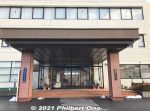
Biwako Shuko no Uta Shiryokan (Lake Biwa Rowing Song Museum) moved to this building's 1st floor and opened on April 1, 2020. This is the Imazu-Higashi Community Center (今津東コミュニティセンター).Right across from the Imazu Shimin Kaikan concert hall.
|
|
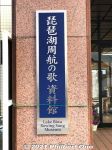
The museum sign includes English! Official English name is "Lake Biwa Rowing Song Museum." 琵琶湖周航の歌資料館
|
|

Entrance to the new Biwako Shuko no Uta Shiryokan (Lake Biwa Rowing Song Museum) in Imazu. 琵琶湖周航の歌資料館
|
|
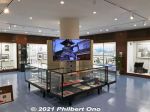
The museum has various panel exhibits, videos, etc. Currently, no explanations in English. Tokiko Kato scored a national hit with the song in 1971.
|
|
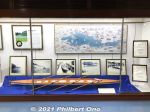
Model of fixed-seat boat used during Oguchi Taro's time in 1917.
|
|
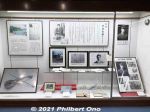
Exhibit for Oguchi Taro who composed the song.
|
|
|
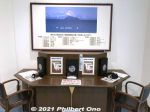
CD listening station for many cover versions by famous Japanese singers and groups. There are many, and you can listen to each of them.The song was included in a record for the first time in 1958 when Kyoto University made an album of its university songs on the 90th anniversary of the school's founding. In 1961, a chorus group named Boney Jacks recorded the song in an album of Japanese songs. And so did singer Peggy Hayama in 1962.
|
|

Shoji Ueda Museum of Photography. Beautiful museum in the middle of nowhere, dedicated to the late Ueda Shoji, one of Japan's most famous fine-art photographers.
|
|
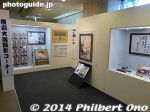
In the museum lobby is a special exhibition about Yokozuna Taiho, one of the greatest yokozuna in history. His sumo stable (Taiho Beya) was in Koto.
|
|
|
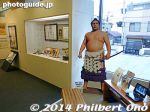
Yokozuna Taiho exhibition corner.
|
|
|
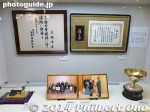
Yokozuna Taiho's awards.
|
|
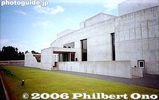
Entrance
|
|
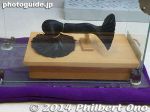
Yokozuna Taiho's topknot.
|
|

Front view. On the left, there is a small lens in the wall for a camera obscura.
|
|
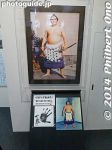
Portrait of Yokozuna Taiho and his handprint.
|
|
|
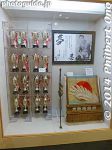
Yokozuna Taiho's tournament victories.
|
|

Inside one of the galleries.
|
|

View of Mt. Daisen.
|
|

View of Mt. Daisen.
|
|
|
|

Sumo Photo Museum 相撲写真資料館
|
|

Next to a portrait studio is a small garage with sumo photos on the walls.
|
|

Inside Sumo Photo Museum
|
|

Sumo Photo Museum
|
|
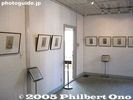
Photo museum
|
|
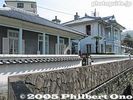
Photo museum
|
|

Sekigahara Town History and Folklore Museum 関ヶ原町歴史民俗資料館Near Tokugawa Ieyasu's Final Base Camp.
|
|

Sekigahara Town History and Folklore Museum 関ヶ原町歴史民俗資料館
|
|

Explanatory map of the Battle of Sekigahara
|
|

Explanatory map of the Battle of Sekigahara
|
|

Statue of Lord Takenaka Hanbei 竹中半兵衛重治
|
|

Inside Sekigahara Town History and Folklore Museum 関ヶ原町歴史民俗資料館
|
|

Unique helmets worn by warlords on the battlefield.
|
|

Conch shell for battle.
|
|

Cannon
|
|
|
|

Ishida Mitsunari, age 41 at the time of the battle
|
|

Illustration of Mt. Matsuo where Lord Kobayakawa Hideaki was based.
|
|

Warlord banners
|
|

Warlord banners, left to right: Kuroda, Fukushima, Honda, and Tokugawa.
|
|

Profiles of neutral armies
|
|

Profiles of Western Forces
|
|

2nd floor
|
|

Weapons used in battle
|
|

Samurai armor with matchlock gun bullet holes.Created by an experiment with matchlock gun fired at the body armor at over 50 meters aways, piercing both the front and back body armor.
|
|

Inside 豊浄院
|
|

Adachi Museum of Art provides a free shuttle bus ride from JR Yasugi Station. The bus schedule is here, but this is not the bus. Also online: https://www.adachi-museum.or.jp/en/shuttle_bus.
|
|

This is the shuttle bus to Adachi Museum of Art. It is slightly behind the bus schedule sign.
|
|

Adachi Museum of Art is celebrated for its beautiful Japanese garden and superb artworks especially by Yokoyama Taikan. And in such a rural place. Amazing.
|
|

The museum was founded in 1970 by Adachi Zenko (1899–1990), a native of Yasugi. He was a successful local merchant as a textile wholesaler and real estate business.He collected Yokoyama Taikan paintings and he thought they went well with the museum's beautiful landscape garden. Free shuttle bus ride from JR Yasugi Station.
|
|

Since it was New Year's 2018, kadomatsu at the museum entrance.
|
|

Mr. Adachi pointing the way to the garden.
|
|
|

The museum has super clean picture windows for viewing the gardens.
|
|

Adachi Museum of Art garden, Shimane Prefecture.
|
|

Adachi Museum of Art garden.
|
|

Adachi Museum of Art garden, Shimane Prefecture.
|
|

Adachi Museum of Art garden, Shimane Prefecture.
|
|

Adachi Museum of Art garden, Shimane Prefecture.
|
|

Adachi Museum of Art garden waterfall, Shimane Prefecture.
|
|
|

Koi pond
|
|

Picture window with no glass.
|
|

Natural scroll next to a Buddhist altar.
|
|

Adachi Museum of Art garden, Shimane Prefecture.
|
|

Adachi Museum of Art garden, Shimane Prefecture.
|
|

Adachi Museum of Art garden, Shimane Prefecture.
|
|

Sculpture at Adachi Museum of Art garden, Shimane Prefecture.
|
|

Amenomori Hoshu-an museum. Built on the land where Amenomori Hoshu's house once stood. Born in Amenomori, Amenomori Hoshu (1668-1755) was a Confucian scholar and leading diplomat to Korea during the Edo Period.
|
|

Entry to the Amenomori Hoshu-an. It exhibits things, books, documents, etc., related to Amenomori Hoshu. Admission 250 yen. Hours: 9 am - 4 pm, closed Mon. Phone: 0749-85-5095
|
|

This is the museum room with various exhibits related to Amenomori Hoshu and Japan-Korean relations during the Edo Period. Hoshu was based in Tsushima in Nagasaki, an island close to Korea.
|
|

Route of the Korea's royal embassy procession to Edo. The Korean kingdom sent an official mission to Edo when there was a significant occasion, such as the installation of a new shogun. They traveled along this route which also passed through Shiga.
|
|

At age 18, Hoshu went to Edo and studied Confucianism under Confucian scholar Kinoshita Jun'an. He was later employed by the Tsushima clan and was put in charge of Korean relations at age 22.
|
|

Statue of Hoshu. At age 25, Hoshu learned Chinese. At age 36, he lived and studied Korean in Pusan for 3 years during 1702-1705.
|
|

Statue of Amenomori Hoshu. He is regarded as a pioneer in Korean-Japanese relations and an internationally-minded person ahead of his time.
|
|

Hoshu rightly believed that language represented the culture, and learning the language was thus essential to understand the country.In 2017, Amenomori Hoshu's documents related to Japan-Korea relations during the Edo Period will be inscribed as a UNESCO Memory of the World.
|
|

Assembly hall. The museum sometimes holds events. Once a year, they conduct a homestay program for students from South Korea.
|
|

Faces of Hoshu on the wall.
|
|

Tea ceremony room.
|
|
| 4117 files on 17 page(s) |
1 |
 |
 |
 |
 |
|